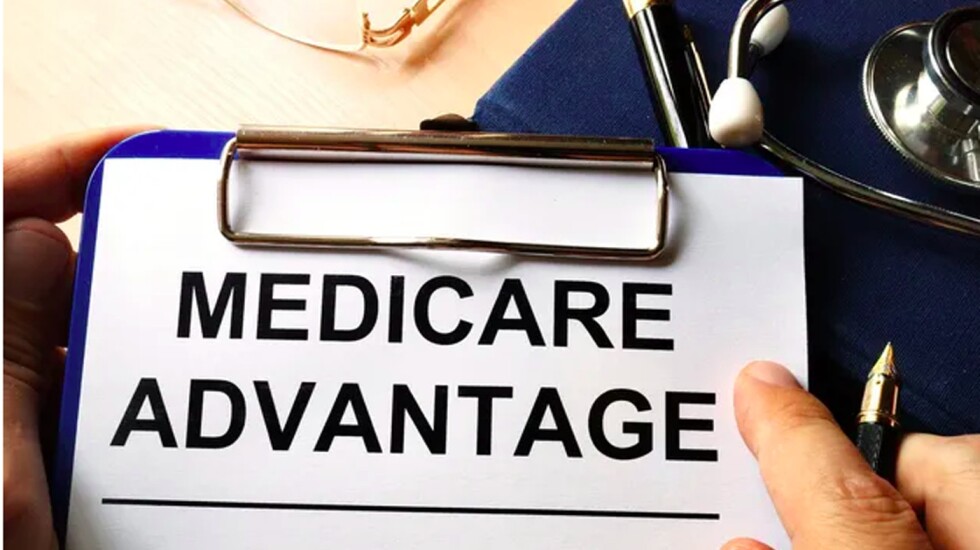
It’s annual open enrollment time again for the 65 million Americans covered by Medicare, the federal health program for older people and some people with disabilities.
From Oct. 15 to Dec. 7, people enrolled in traditional Medicare or in one of the Medicare Advantage plans, which are offered by private insurers, can change their coverage. First-time enrollees generally sign up within a few months of their 65th birthday, whether that’s during open enrollment season or not.
There are a few new features for 2024 — including a lower out-of-pocket cost limit for some people taking expensive drugs.
Experts say beneficiaries should examine their current coverage because health and drug plans might have changes — including the pharmacies or medical providers in their networks and how much prescriptions cost.
“The advice is to check, check and double-check,” said Bonnie Burns, a consultant with California Health Advocates, a nonprofit Medicare advocacy program.
As anyone in the program or who helps relatives or friends with coverage decisions knows, it’s complicated. Some things to keep in mind:
Medicare vs. Medicare Advantage
People in traditional Medicare can see any participating doctor or hospital — and most do participate.
People in Medicare Advantage must select from a specified list of providers — a network — unique to each plan. Some Advantage plans have a broader network than others. Check whether your preferred doctors, hospitals and pharmacies are covered.
Because traditional Medicare doesn’t cover prescriptions, people who are in that also should consider signing up for Part D, the optional drug benefit, which has a separate premium.
Most Medicare Advantage plans include drug coverage — but make sure before enrolling because some don’t. These private plans are advertised heavily, often touting that they offer “extras” unavailable in traditional Medicare, such as dental or vision coverage. Read the fine print to see whether there are limits on such benefits.
For the first time, people 65 and older joining traditional Medicare can buy a supplemental, or Medigap, policy. These cover many out-of-pocket costs, such as deductibles and copays, which can be substantial. Generally, beneficiaries have a six-month window after enrolling in Medicare Part B to purchase a Medigap policy.
So, switching from Medicare Advantage back to traditional Medicare during open enrollment can raise issues for those who want to buy a supplemental Medigap policy.
That’s because, with some exceptions, private insurers offering Medigap plans can reject applicants with health conditions or raise premiums or limit coverage of preexisting conditions.
Making all of this more confusing, there’s a second open enrollment period each year only for people in Medicare Advantage plans. They can change plans or switch back to traditional Medicare from Jan. 1 to March 31.
Drug coverage has improved
Beneficiaries who signed up for a Part D drug plan or get drug coverage through their Medicare Advantage plan know there are a lot of copays and deductibles. But, in 2024, for people who require a lot of high-priced medications, some of these expenses will disappear.
President Joe Biden’s Inflation Reduction Act places a new annual limit on Medicare beneficiaries’ out-of-pocket costs for drugs.
“That policy is going to help people who have very expensive medications for conditions like cancer, rheumatoid arthritis and hepatitis,” said Tricia Neuman, senior vice president and head of the KFF Medicare policy program.
The cap will greatly help beneficiaries who fall into Medicare’s catastrophic coverage tier — an estimated 1.5 million Americans in 2019, according to KFF.
Here’s how it works: The cap is triggered after patients and their drug plans spend about $8,000 combined on drugs. KFF estimates that, for many, that means about $3,300 in out-of-pocket spending.
Some people could hit the cap in a single month, given the high prices of many drugs for serious conditions. After reaching the cap, beneficiaries don’t have to pay anything out-of-pocket for their medicines that year, potentially saving them thousands of dollars a year.
This new cap won’t apply to drugs that are infused into patients, generally done at doctors’ offices, such as many chemotherapies for cancer. Those medicines are covered by Medicare Part B, which pays for doctor visits and other outpatient services.
Medicare next year is also expanding eligibility for some low-income beneficiaries to qualify for low- or zero-premium drug coverage that comes with no deductibles and lower copayments, according to the Medicare Rights Center.
Insurers offering Part D and Advantage plans also might have made other changes to drug coverage, according to Burns.
Beneficiaries should check their plan’s formulary, a list of covered drugs, and how much they have to pay for the medications. Check whether prescriptions require a copayment, which is a flat dollar amount, or coinsurance, which is a percentage of the drug cost. Generally, copayments mean lower out-of-pocket costs than coinsurance, Burns said.

Help’s available
In many parts of the country, consumers have a choice of more than 40 Medicare Advantage plans. That can be overwhelming.
Medicare’s online plan finder provides details on the Advantage and Part D drug plans available by ZIP code. It allows users to find details about benefits and costs and each plan’s network of health providers.
Insurers are supposed to keep their provider directories up to date. But experts say people should check directly with doctors and hospitals they prefer to confirm they participate in any given Advantage plan. People concerned about drug costs should “check whether their pharmacy is a ‘preferred’ pharmacy and if it’s in network” under their Advantage or Part D plan, Neuman said.
“There can be a significant difference in out-of-pocket spending between one pharmacy and another even in the same plan,” she said.
To get the fullest picture of estimated drug costs, Medicare beneficiaries should look up their prescriptions, dosages and their pharmacies, said Emily Whicheloe, director of education at the Medicare Rights Center.
“For people with specific drug needs, it’s also a good idea to contact the plan and say, ‘Hey, are you still covering this drug next year?’ If not, change to a plan that is,” she said.
Additional help with enrollment can be had for free through the State Health Insurance Assistance Program, which operates in all states.
Beneficiaries also can ask questions via a toll-free hotline run by Medicare: 1-800-633-4227, which is easy to remember as 1-800-MEDICARE.
Insurance brokers also can help, but, Whicheloe said, “Working with a broker can be nice for that personalized touch, but know they might not represent all the plans in their state.”
Whatever you do, avoid telemarketers, Burns said. In addition to TV and mail advertisements, phone calls hawking private plans bombard many Medicare beneficiaries.
When they do, ”Just hang up,” Burns said.
KFF Health News is a national newsroom that produces in-depth journalism on health issues.







